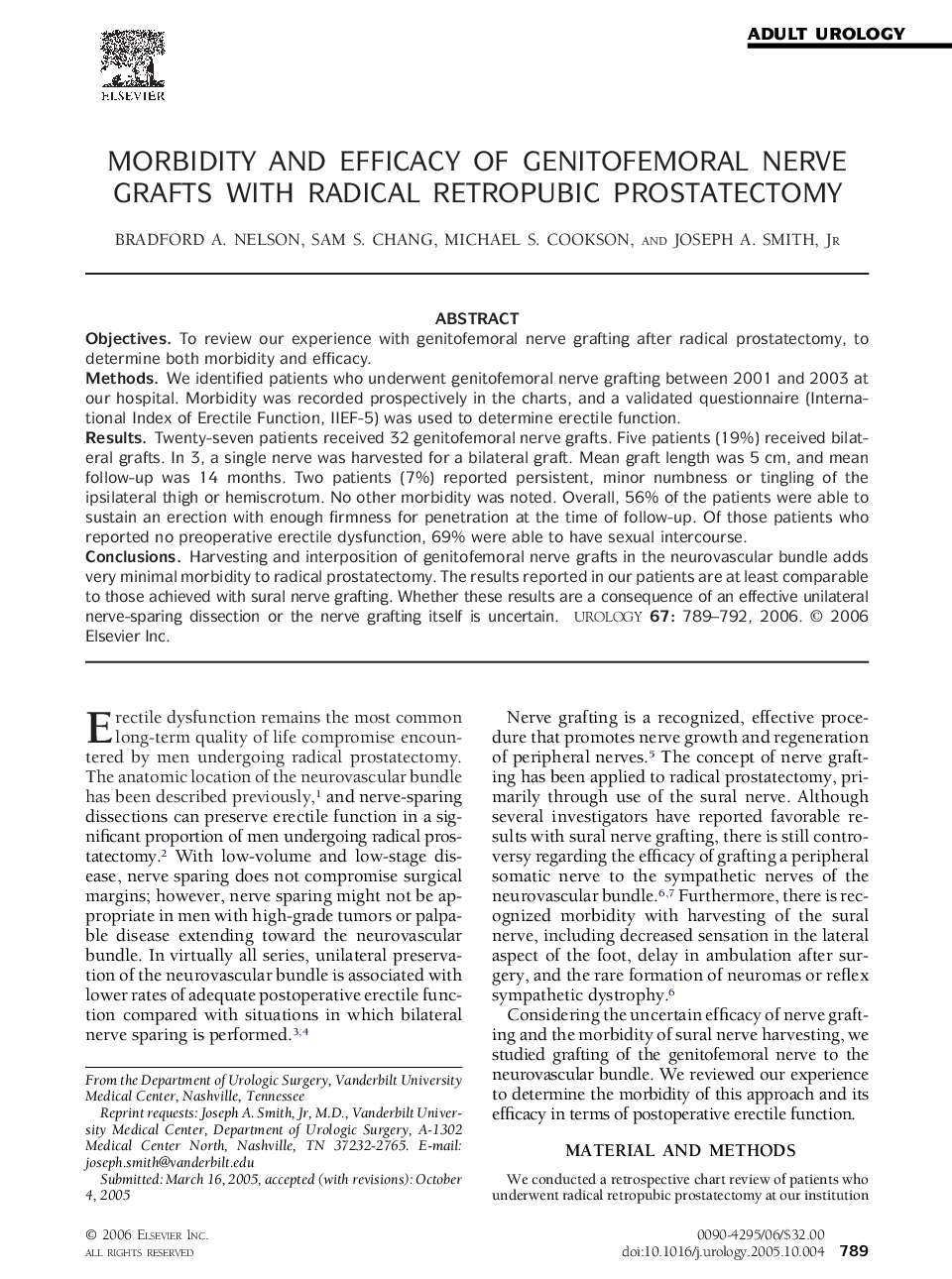| Article ID | Journal | Published Year | Pages | File Type |
|---|---|---|---|---|
| 3906929 | Urology | 2006 | 4 Pages |
ObjectivesTo review our experience with genitofemoral nerve grafting after radical prostatectomy, to determine both morbidity and efficacy.MethodsWe identified patients who underwent genitofemoral nerve grafting between 2001 and 2003 at our hospital. Morbidity was recorded prospectively in the charts, and a validated questionnaire (International Index of Erectile Function, IIEF-5) was used to determine erectile function.ResultsTwenty-seven patients received 32 genitofemoral nerve grafts. Five patients (19%) received bilateral grafts. In 3, a single nerve was harvested for a bilateral graft. Mean graft length was 5 cm, and mean follow-up was 14 months. Two patients (7%) reported persistent, minor numbness or tingling of the ipsilateral thigh or hemiscrotum. No other morbidity was noted. Overall, 56% of the patients were able to sustain an erection with enough firmness for penetration at the time of follow-up. Of those patients who reported no preoperative erectile dysfunction, 69% were able to have sexual intercourse.ConclusionsHarvesting and interposition of genitofemoral nerve grafts in the neurovascular bundle adds very minimal morbidity to radical prostatectomy. The results reported in our patients are at least comparable to those achieved with sural nerve grafting. Whether these results are a consequence of an effective unilateral nerve-sparing dissection or the nerve grafting itself is uncertain.
